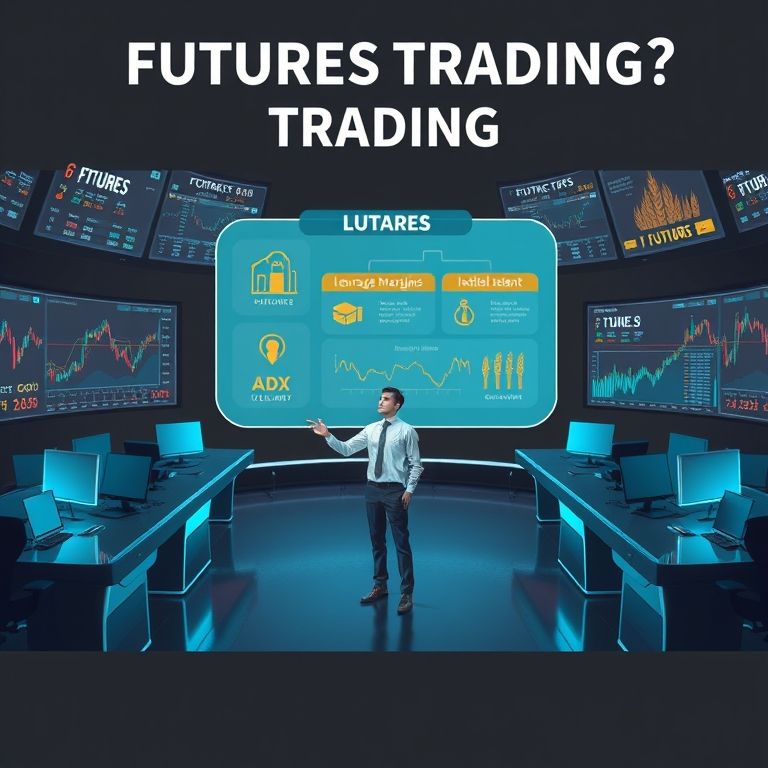was ist future trading
What Is Futures Trading?
If you’ve ever wondered was ist future trading, you’re asking the right question at the right time. Futures trading is a way to buy or sell contracts that obligate you to exchange an asset at a set price on a future date. Traders use it to hedge risk, or to speculate on where prices will go. Think of it like locking in today’s price for a transaction that happens later, with smaller upfront cash (margin) than buying the asset outright. It’s become a staple of modern markets, from traditional stocks and commodities to crypto and emerging DeFi derivatives.

What it actually does for you
- Access to multiple assets with one framework. From forex and stocks to indices, commodities, and even crypto, futures provide a unified way to express views on price moves. A single futures contract can cover oil, gold, or a major stock index, letting you diversify beyond a single asset class.
- Leverage with care. Futures usually require only a fraction of the full contract value as margin, which can amplify gains but also amplify losses. The key is disciplined risk management—clear stop losses, defined exposure, and realistic sizing.
- Price discovery and liquidity. Because futures markets trade around the clock in many cases, you get continuous price signals and robust liquidity during active sessions. That helps with entering and exiting positions without slippage.
Key features and how they show up in practice
- Standardized contracts. Each contract specifies size, expiration, and settlement method. This standardization makes it easier to compare bets, rollover positions, and access reliable data across platforms.
- Hedging appeal. A farmer, a hedge fund, and a crypto trader alike can use futures to guard against adverse price swings. If you own a position or cash flow that depends on a price, futures provide a way to offset risk.
- Expiry and delivery dynamics. Some traders roll contracts forward to maintain exposure, while others close positions prior to delivery. Understanding this helps you avoid surprise costs or forced settlement.
Web3, DeFi, and the new frontier
- On-chain futures and perpetuals. Web3 environments push frontier markets where perpetual futures mimic traditional ones without a fixed expiry, funded by a payment mechanism that aligns long and short interest. This opens accessibility but demands careful study of contract design and oracles.
- Charting and analytics. In DeFi and centralized venues alike, traders lean on charts, order books, and risk metrics. Advanced tools—live data feeds, API access, and backtesting—turn a gut feeling into data-driven decisions.
- Challenges to trust and security. Decentralized bets rely on oracles, liquidity, and smart contract safety. You’ll see faster innovation, but also new risk vectors: oracle outages, long-tail liquidity gaps, and evolving regulatory scrutiny.
Risk, reliability, and smart moves
- Leverage strategies with discipline. A common approach is to risk a fixed percentage of your capital per trade, use tight stop orders, and diversify across assets rather than piling into one bet.
- Safety first. Choose regulated venues or well-audited platforms, verify liquidity depth, and keep private keys secure. Run regular risk checks and avoid overexposure during high-volatility events.
- Realistic expectations. Futures can compound gains, but they can also magnify losses. Pair price alerts with a clear plan for when to exit and reevaluate market assumptions.
Future trends and smart contracting
- AI-driven signals and smart contracts. Expect smarter risk controls, automated adjustments to risk exposure, and more precise pricing models. This beats guesswork and helps traders stay consistent.
- Decentralization vs. regulation. DeFi continues to push opportunities while regulators seek guardrails. The best paths will blend open access with transparent risk management and clear settlement rules.
- A practical slogan to carry forward: “Was ist future trading? Its trading tomorrow’s price today—with clarity, guardrails, and smart tech.”
Bottom line: futures trading offers powerful ways to participate across forex, stock, crypto, indices, options, and commodities—but success comes from disciplined risk management, solid data tools, and thoughtful use of leverage in a fast-changing landscape. If you’re ready to explore, stand on solid analytics, lean into safety, and let intelligent contracts guide your next step.

